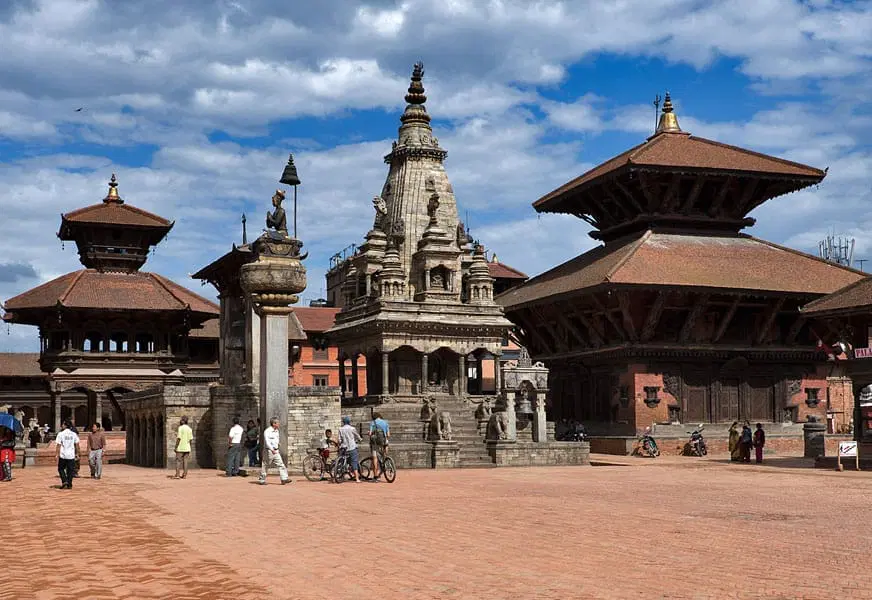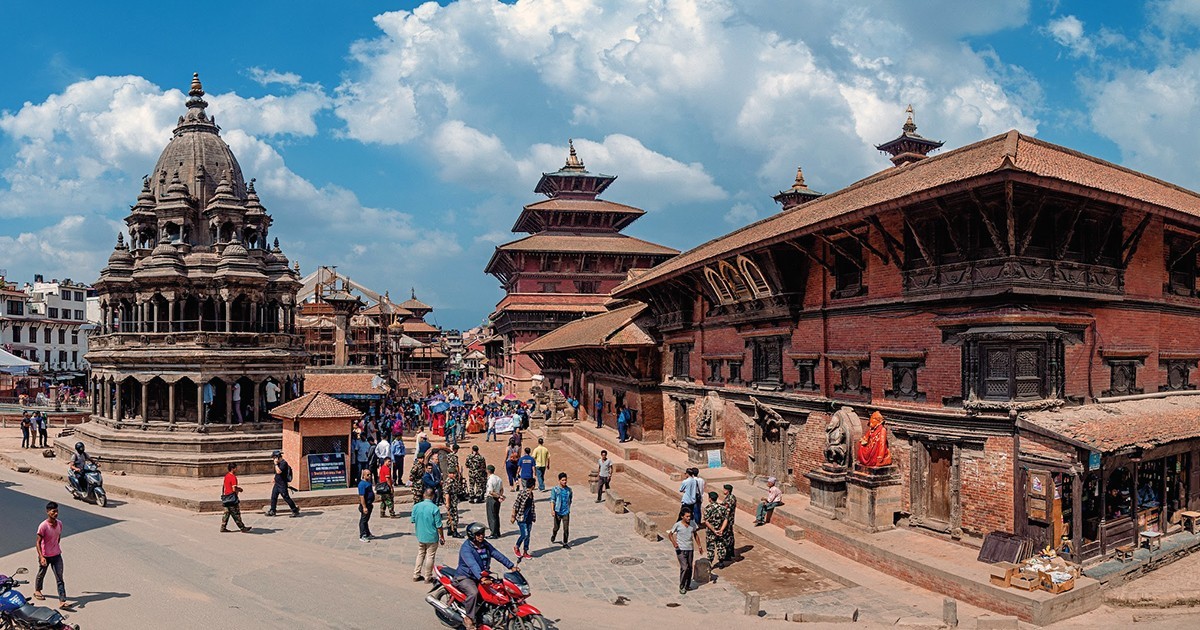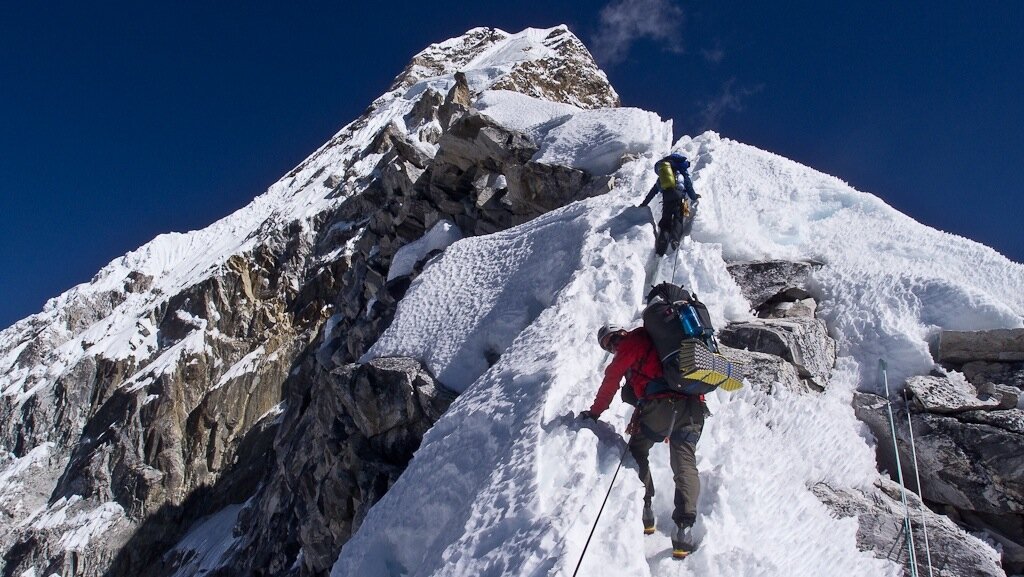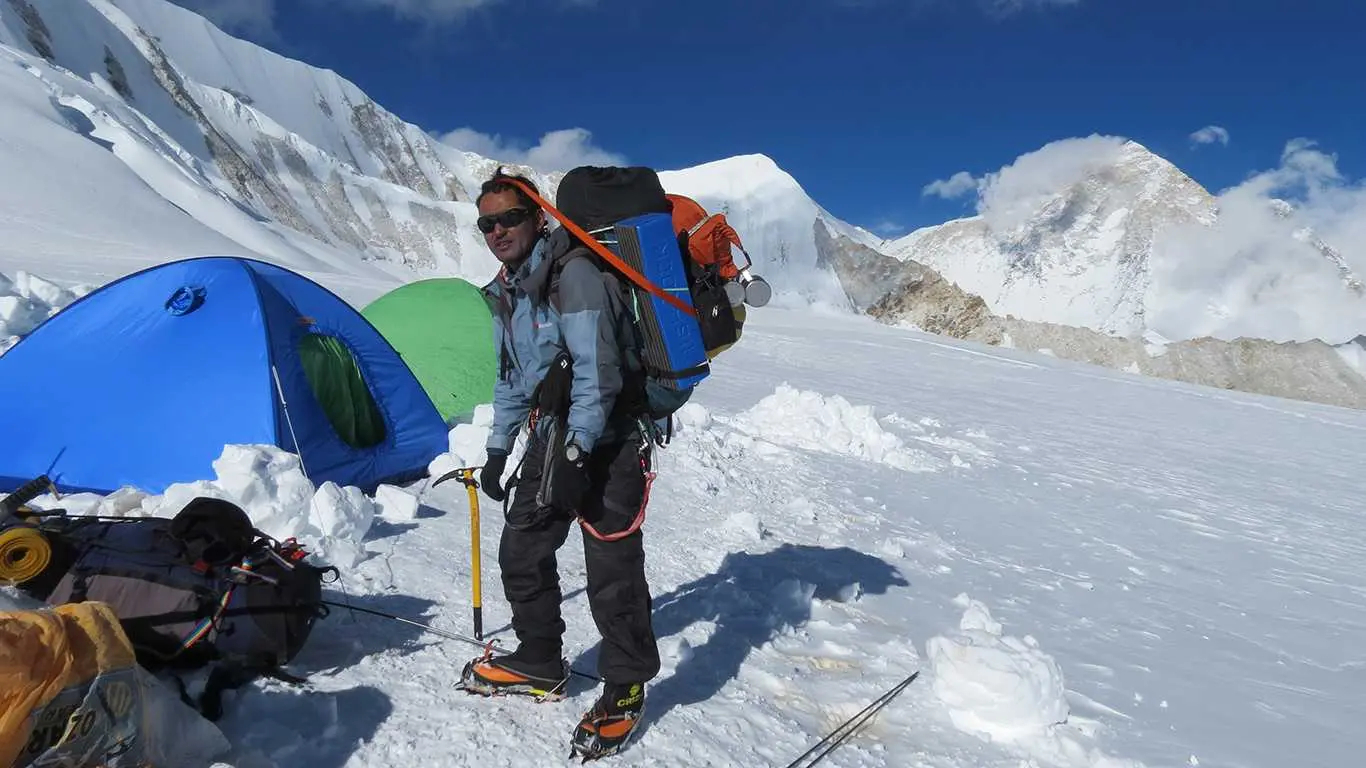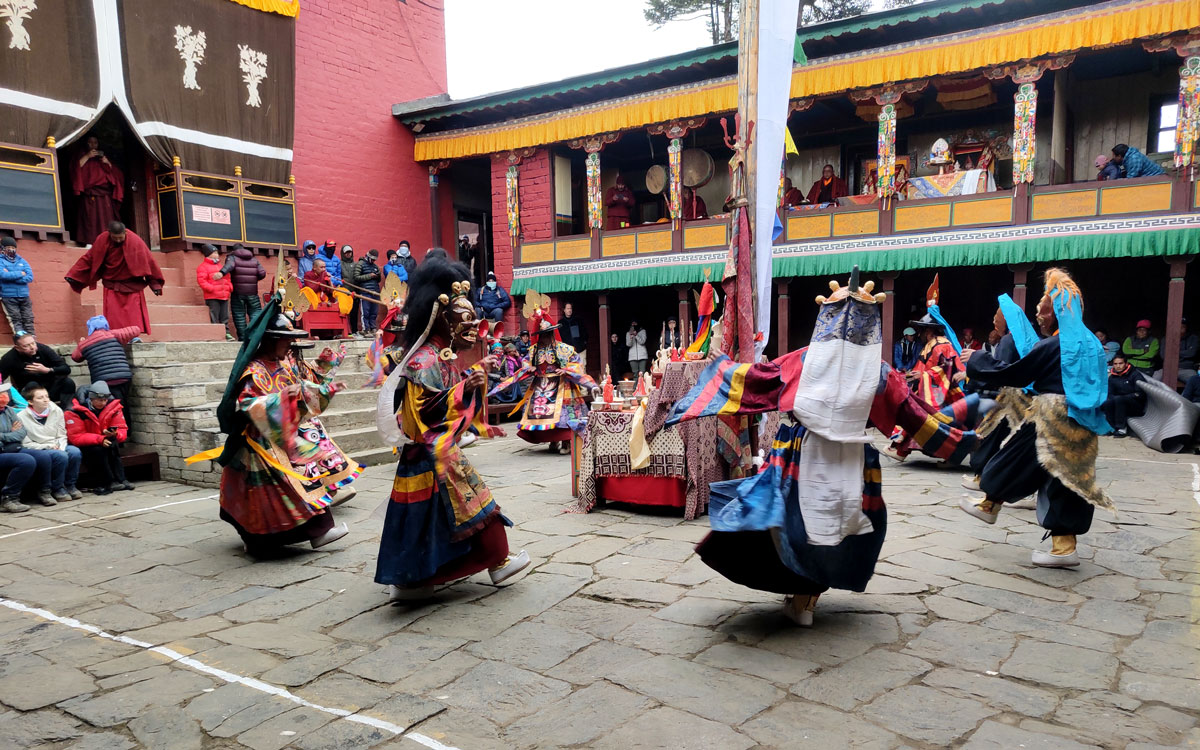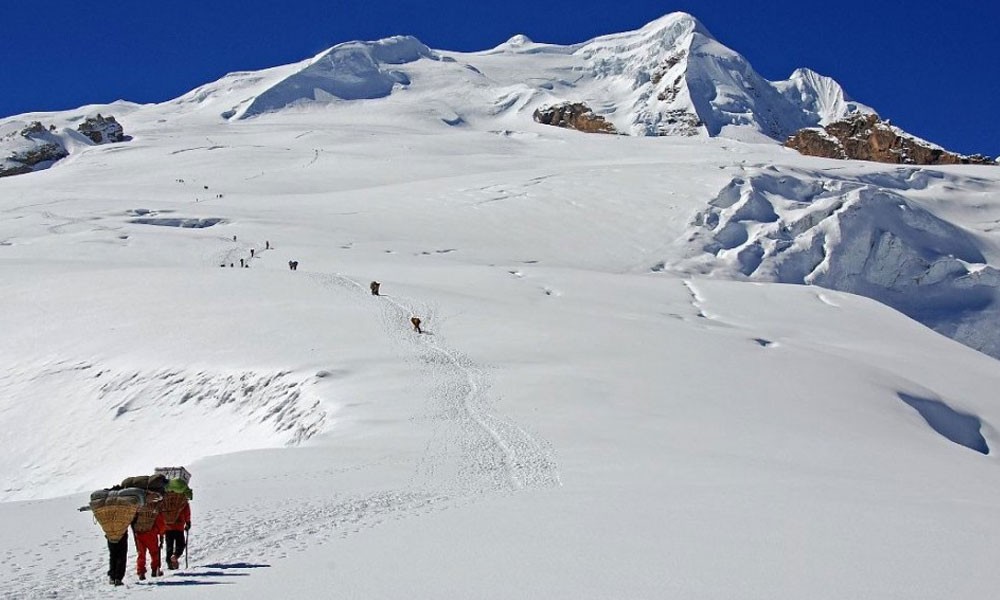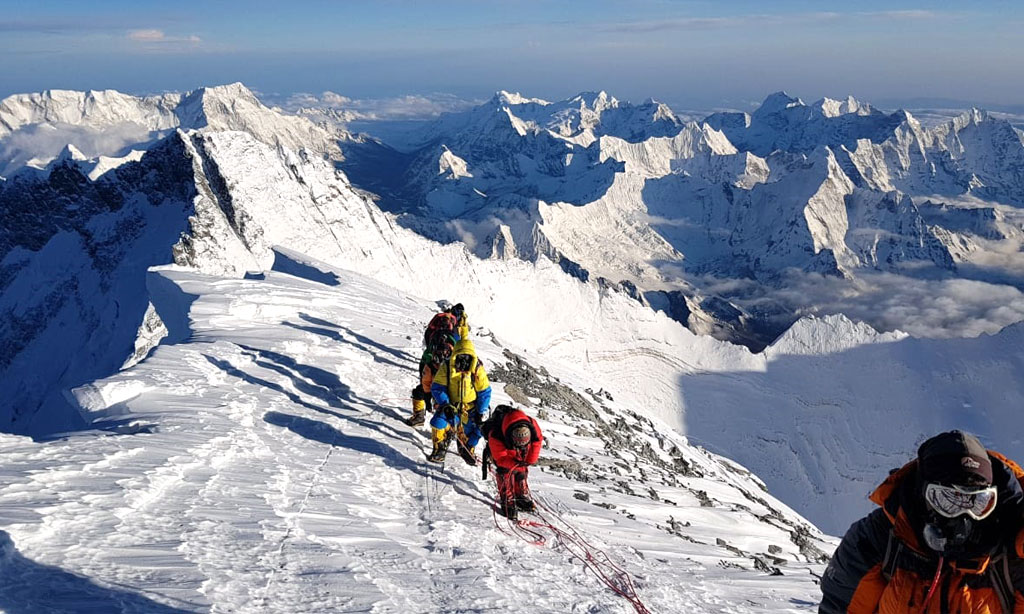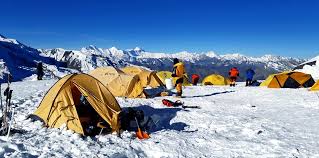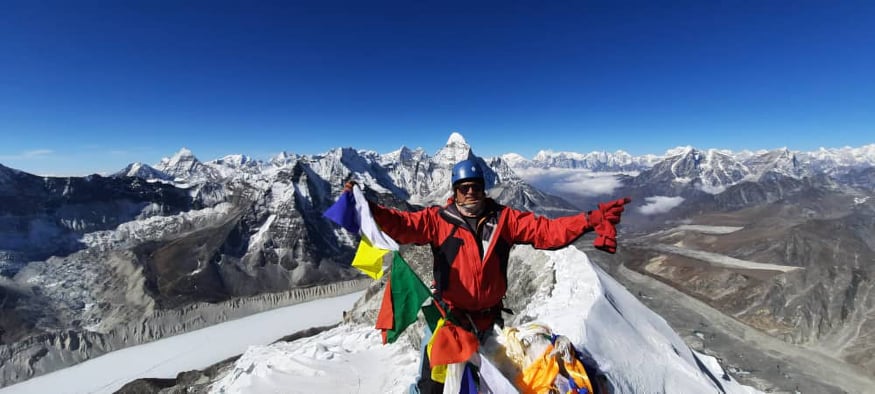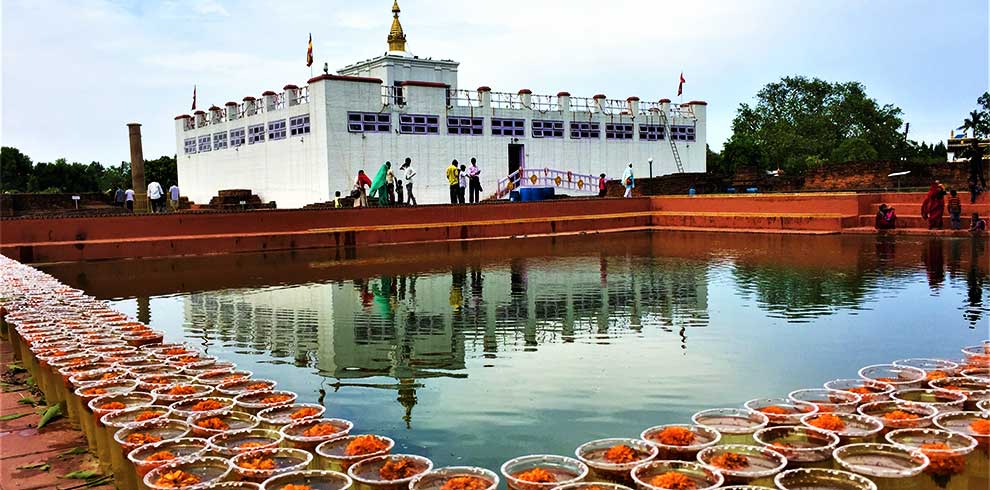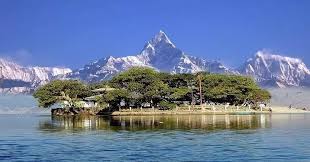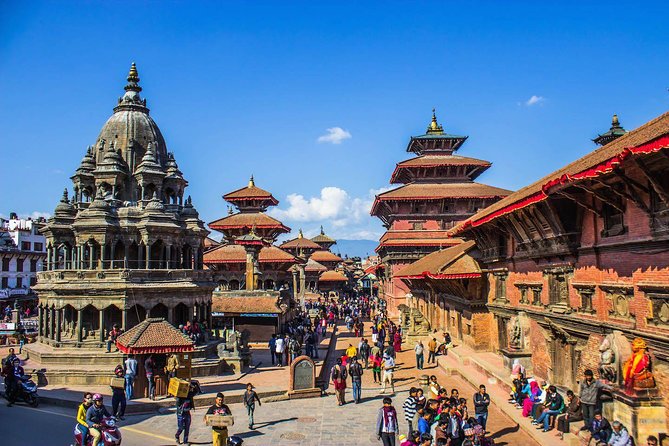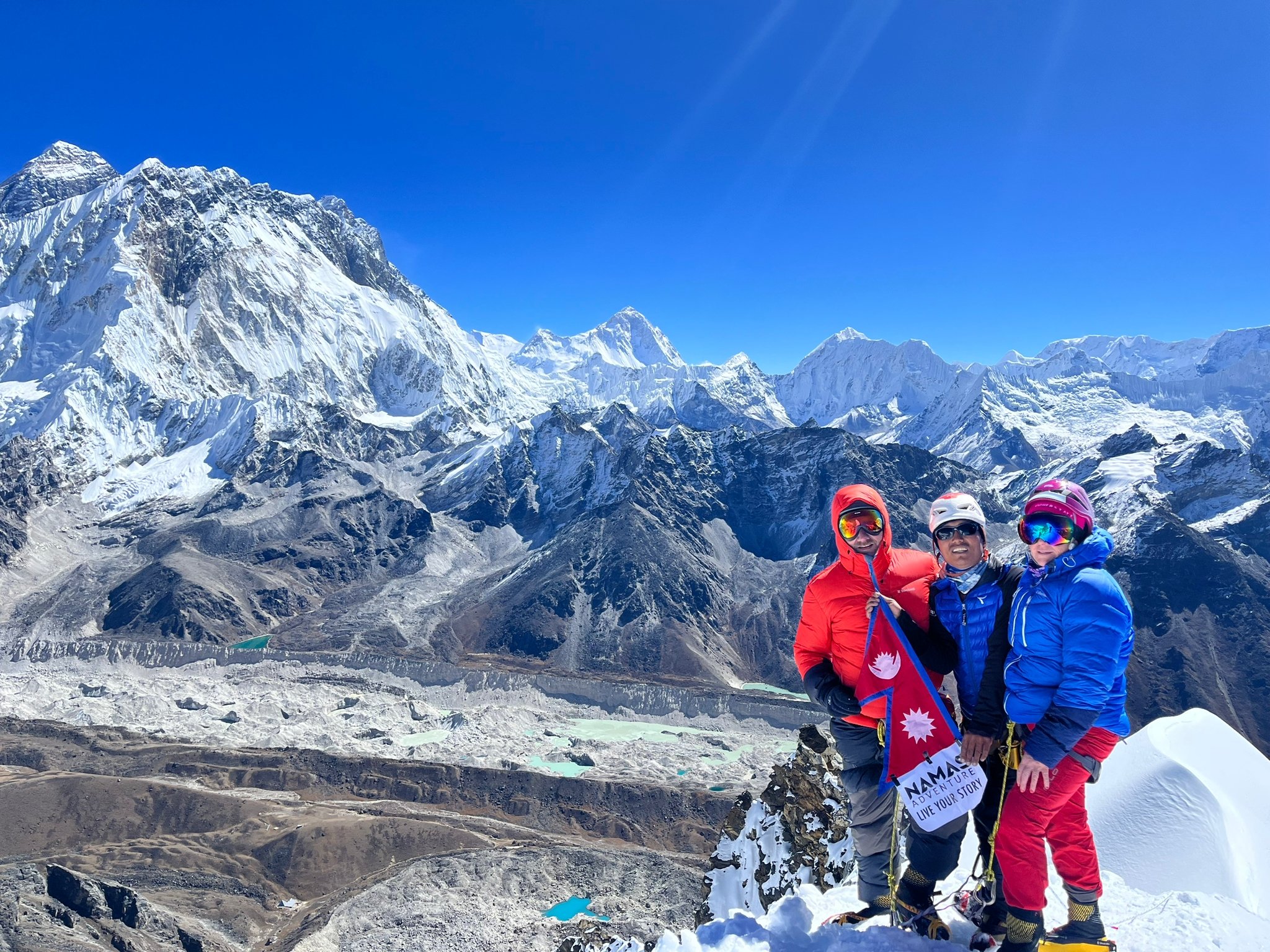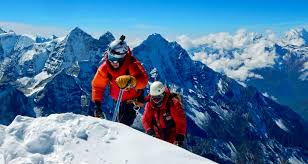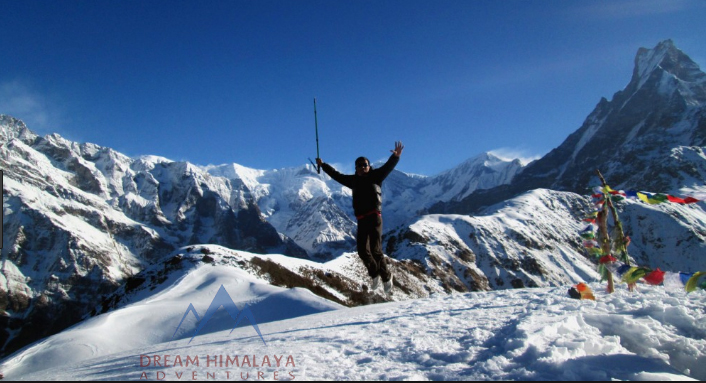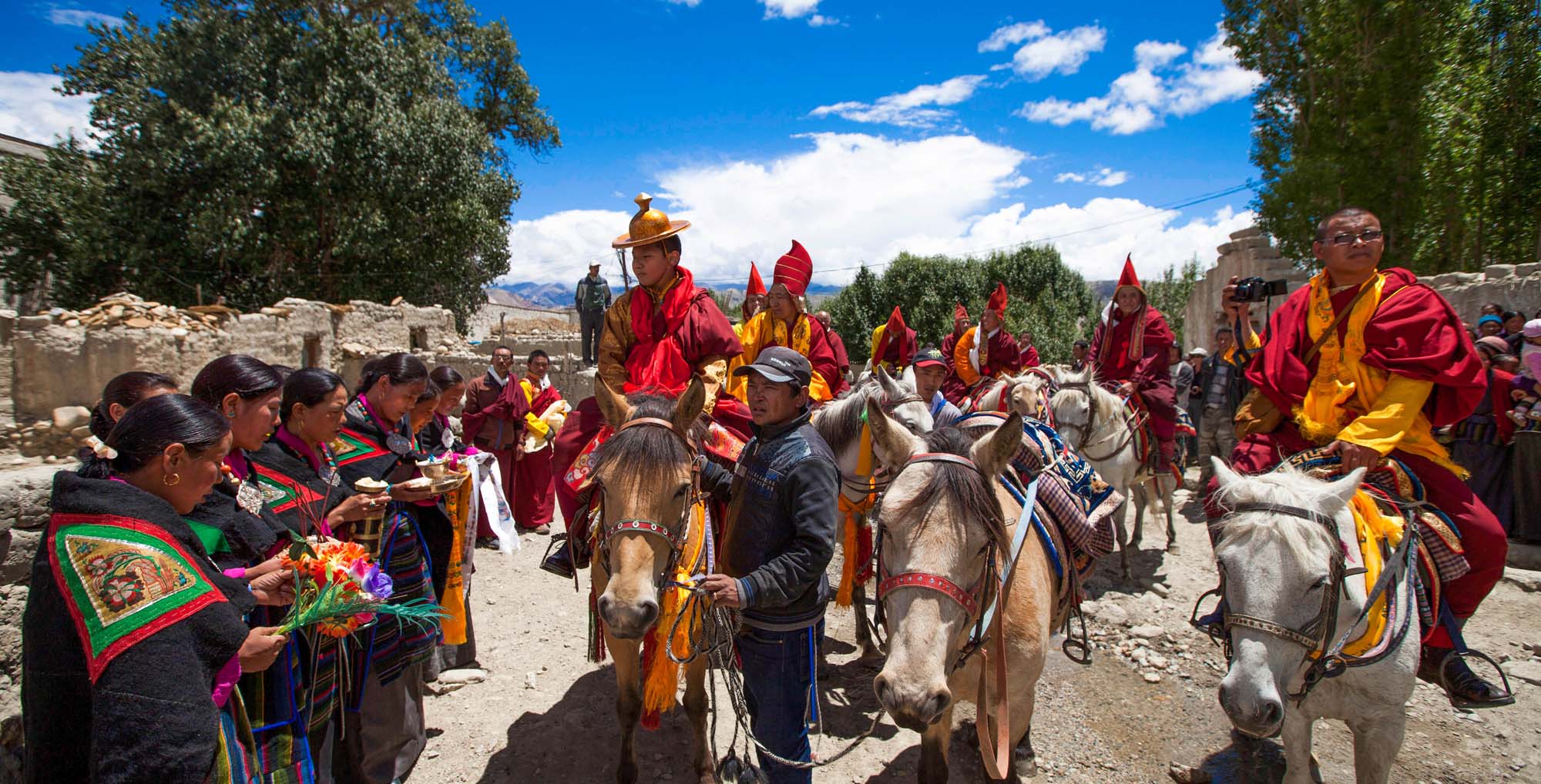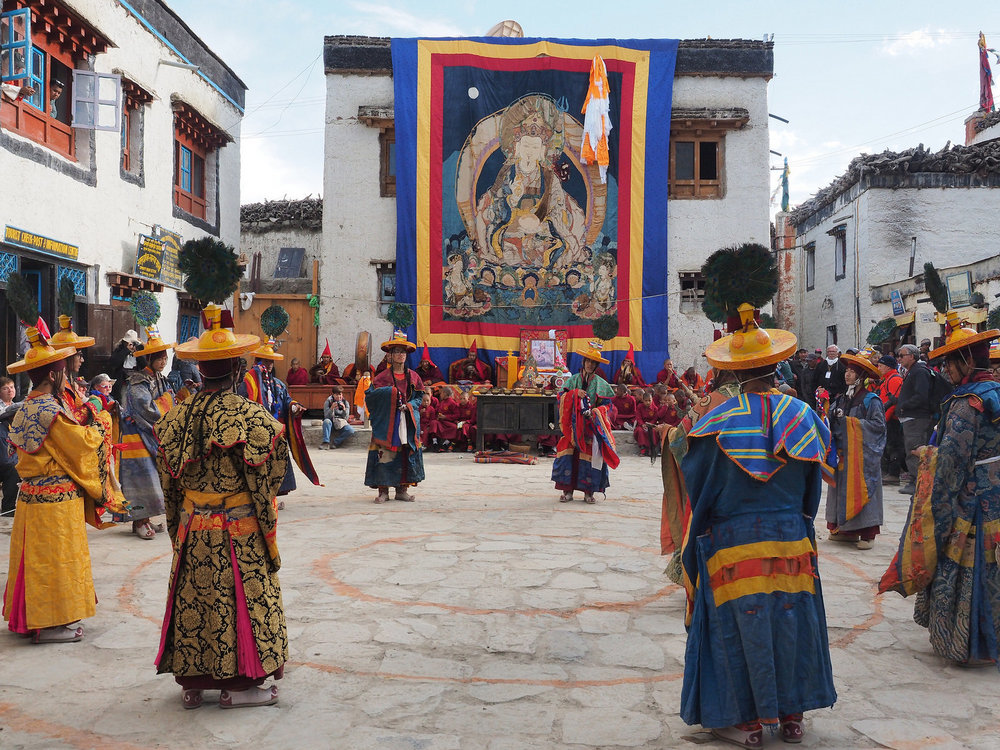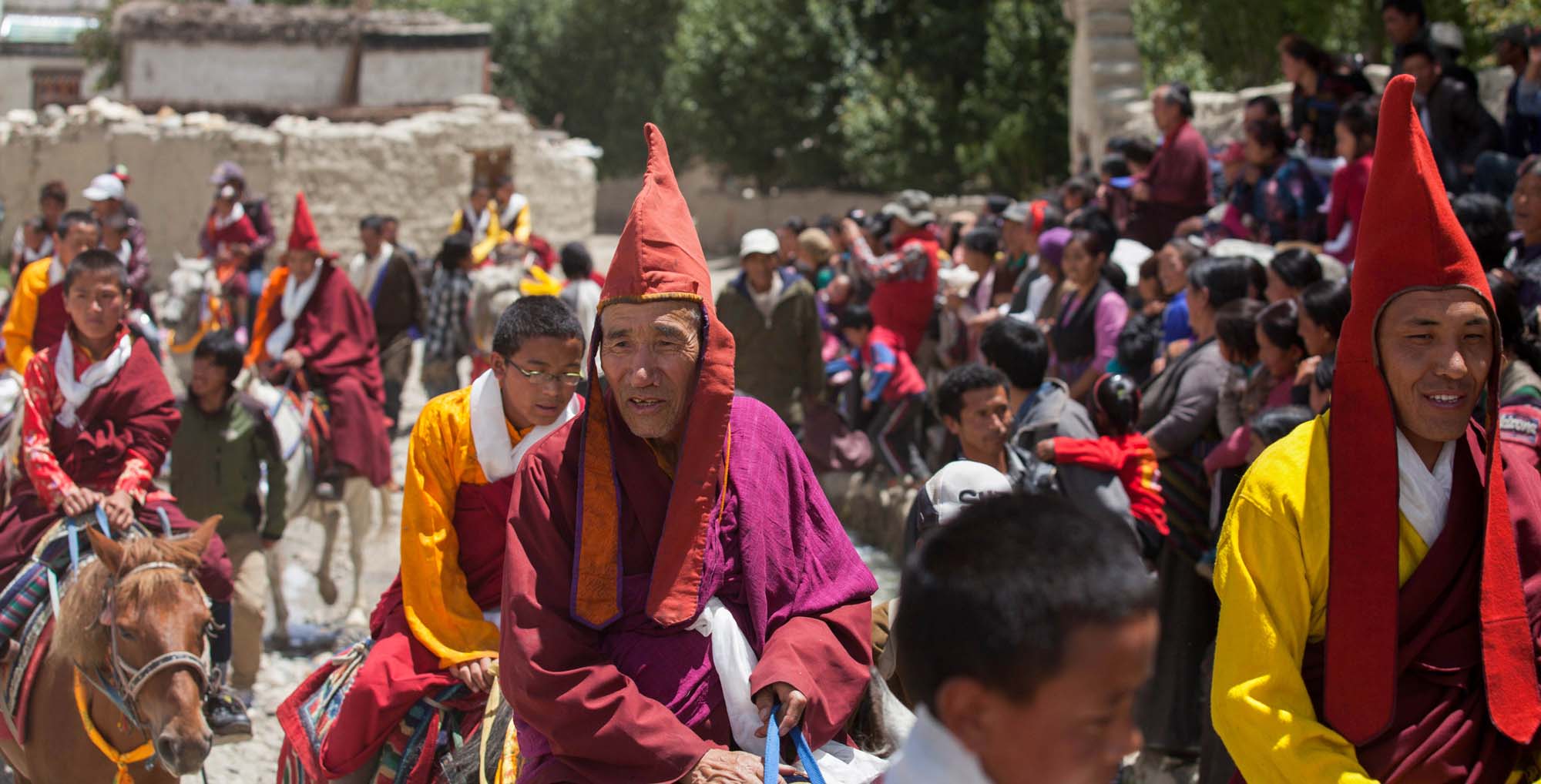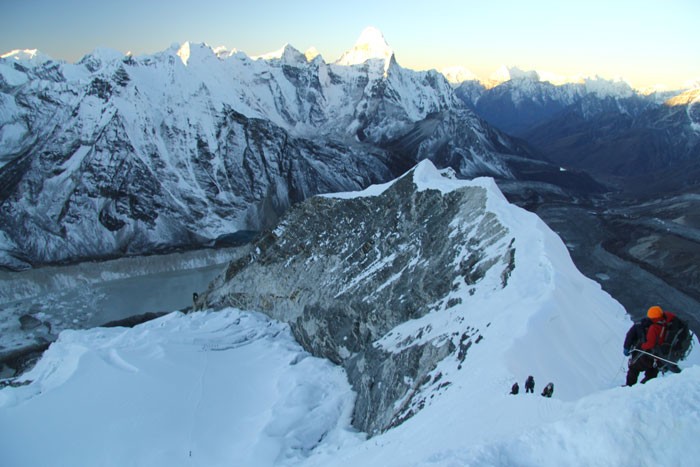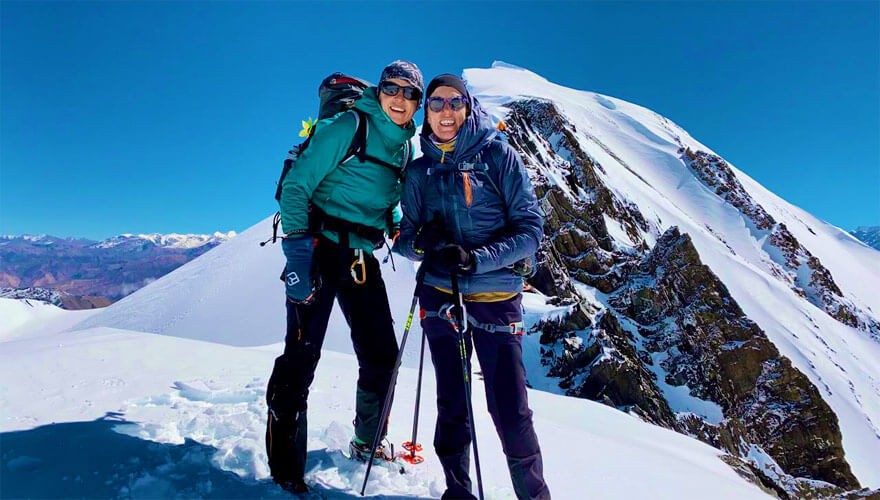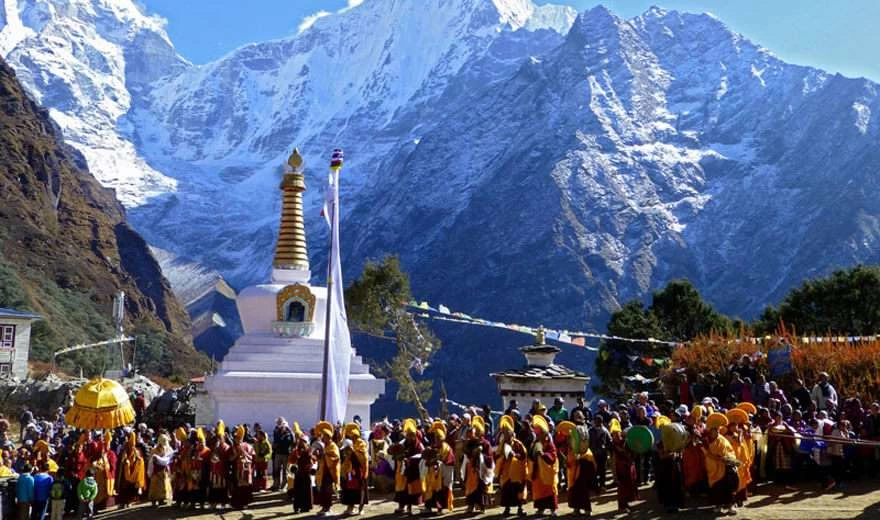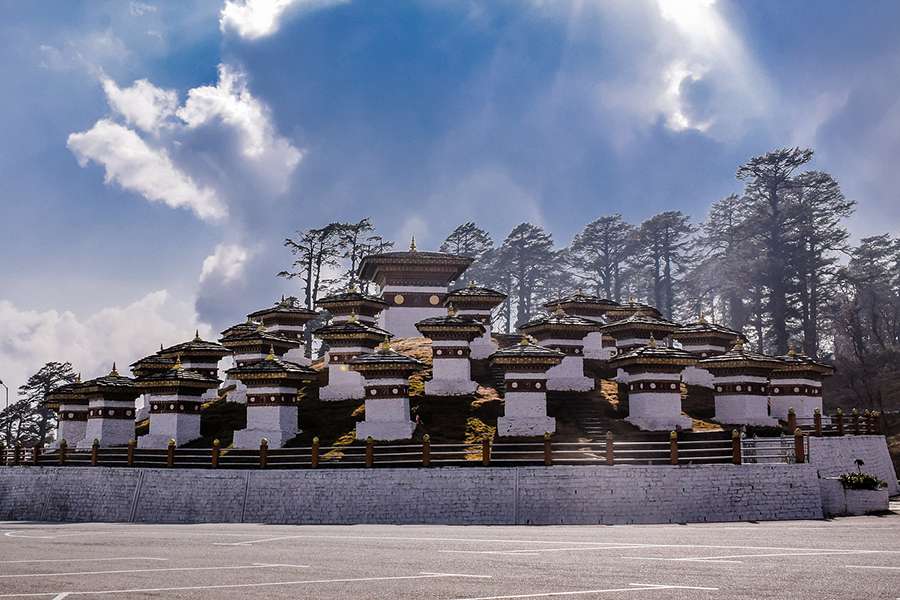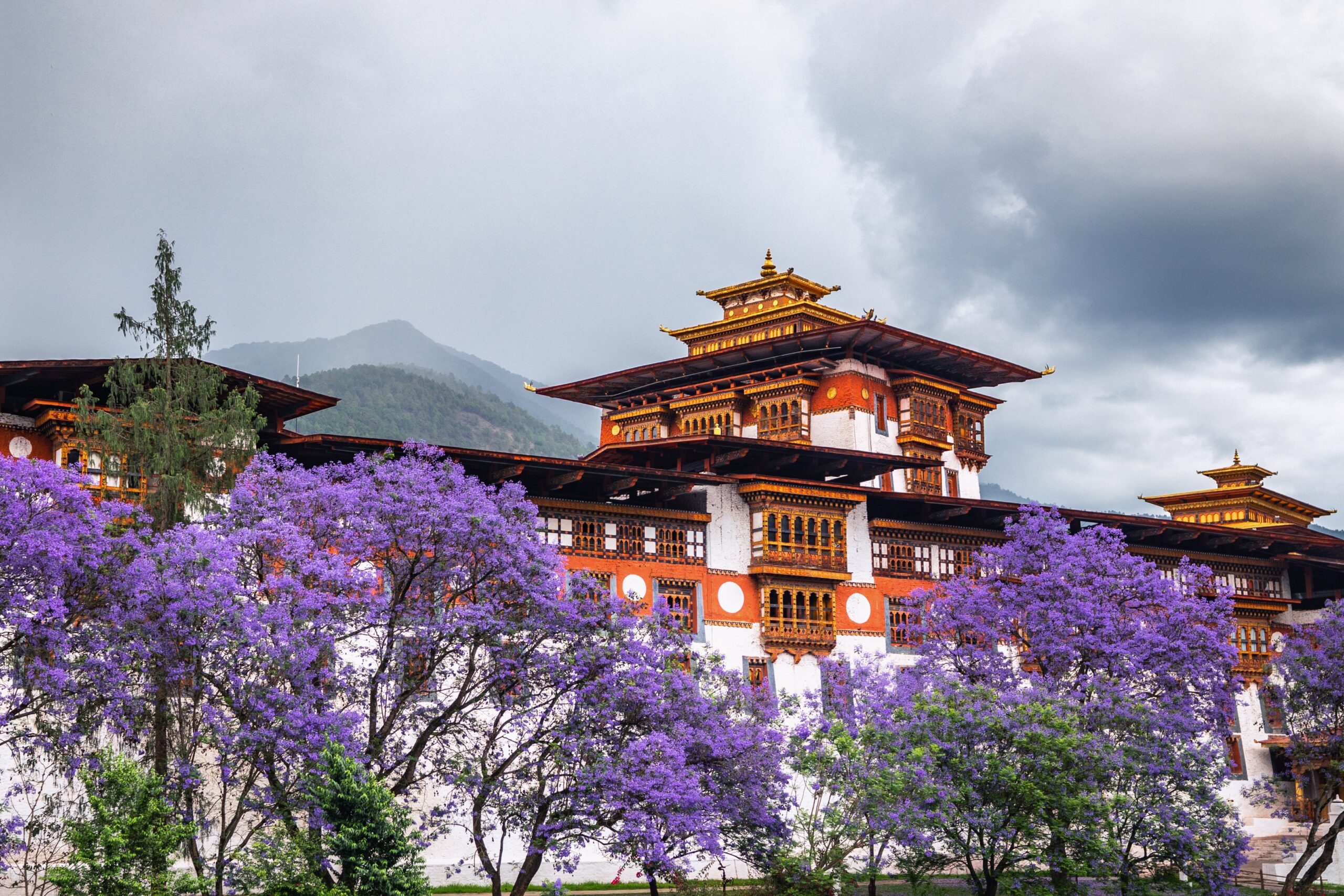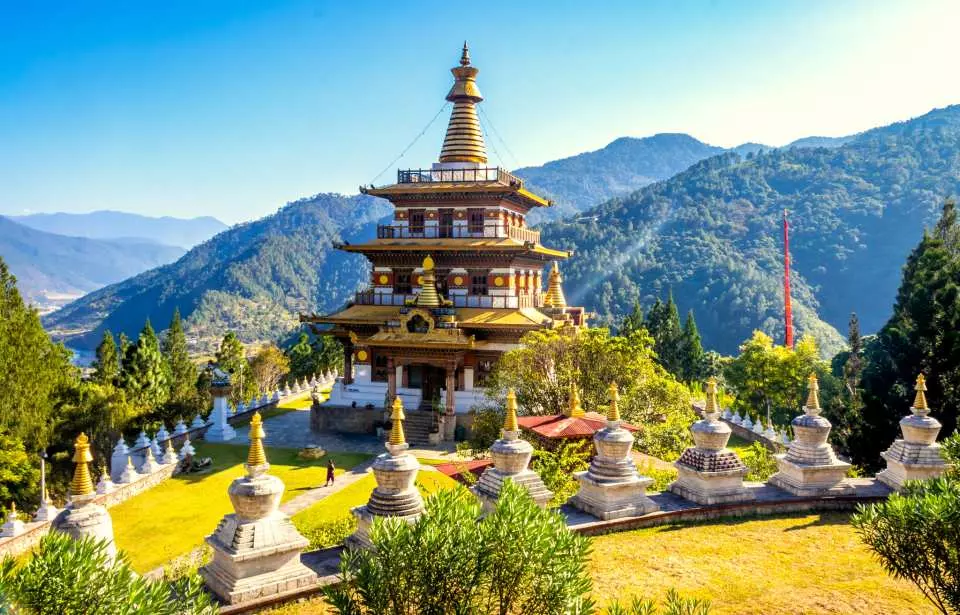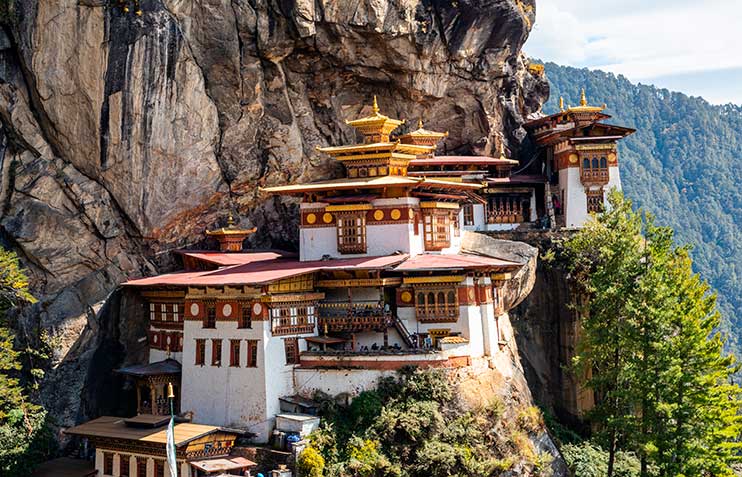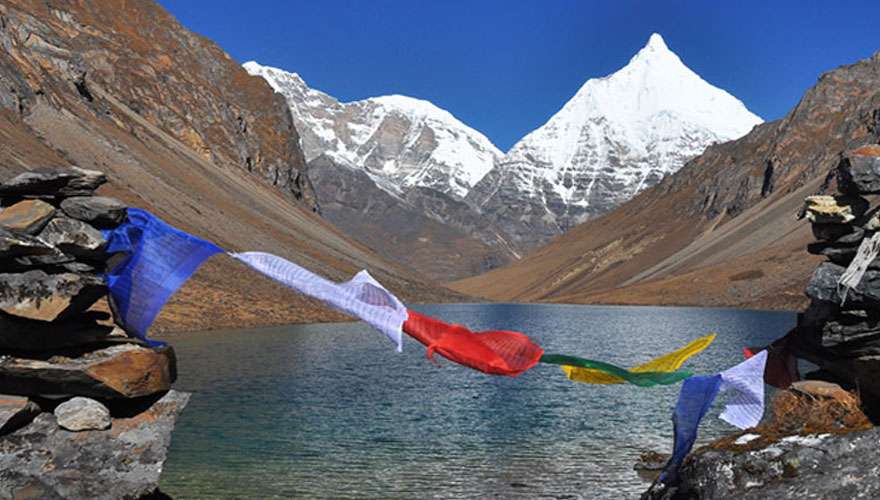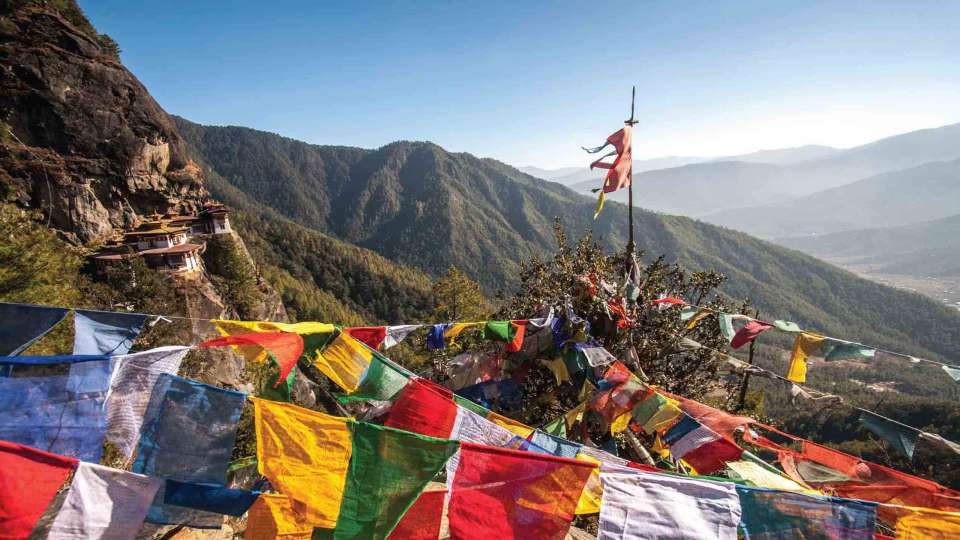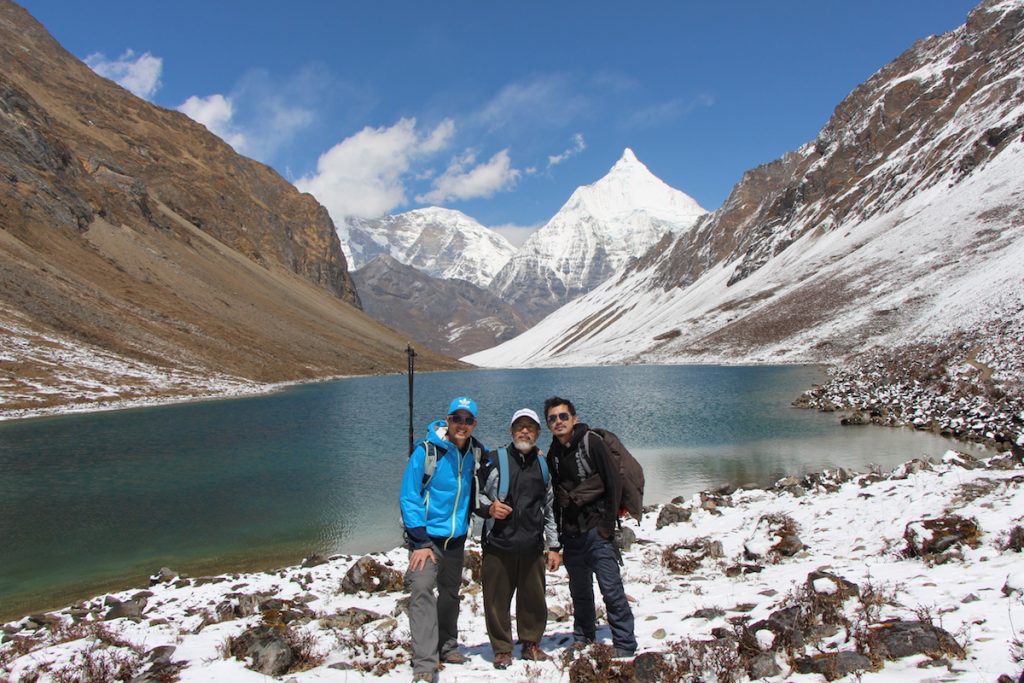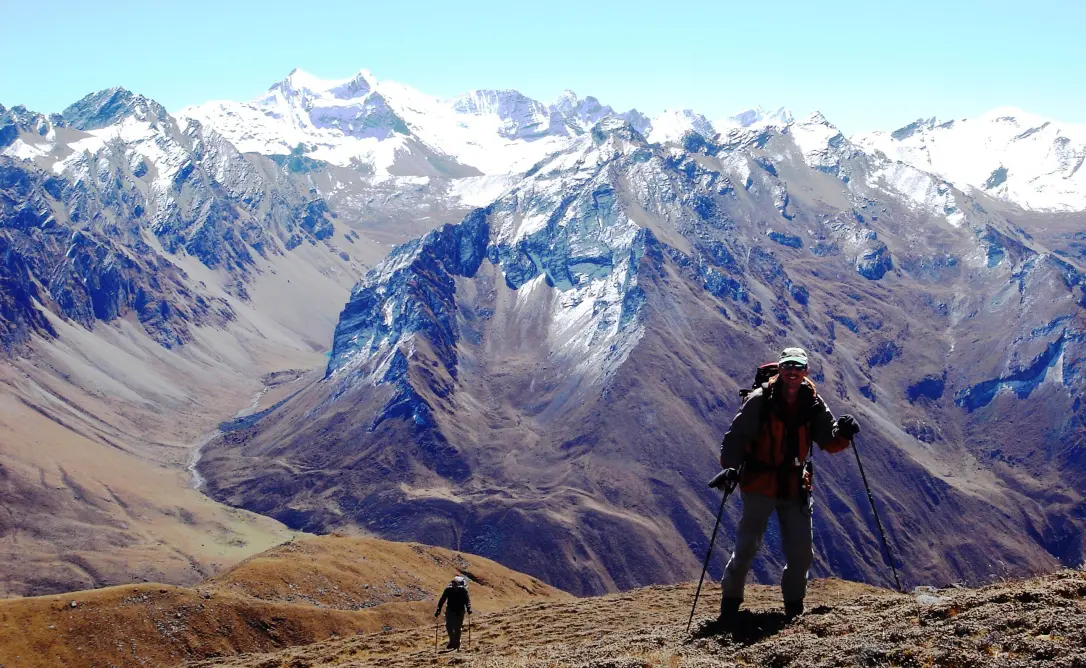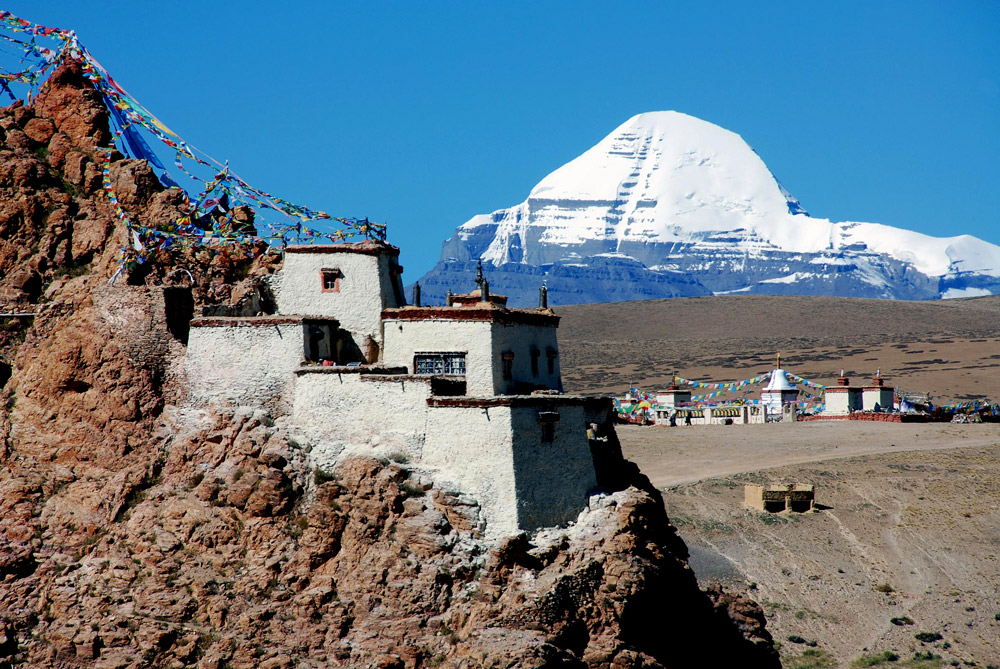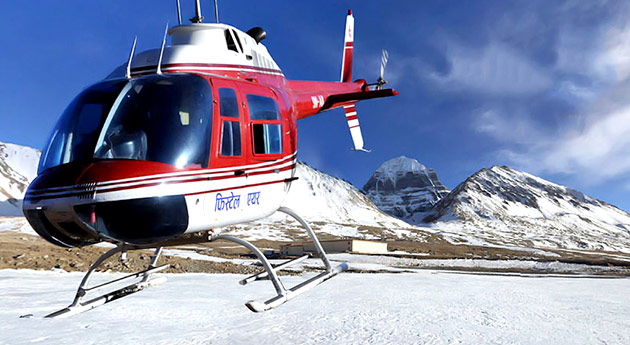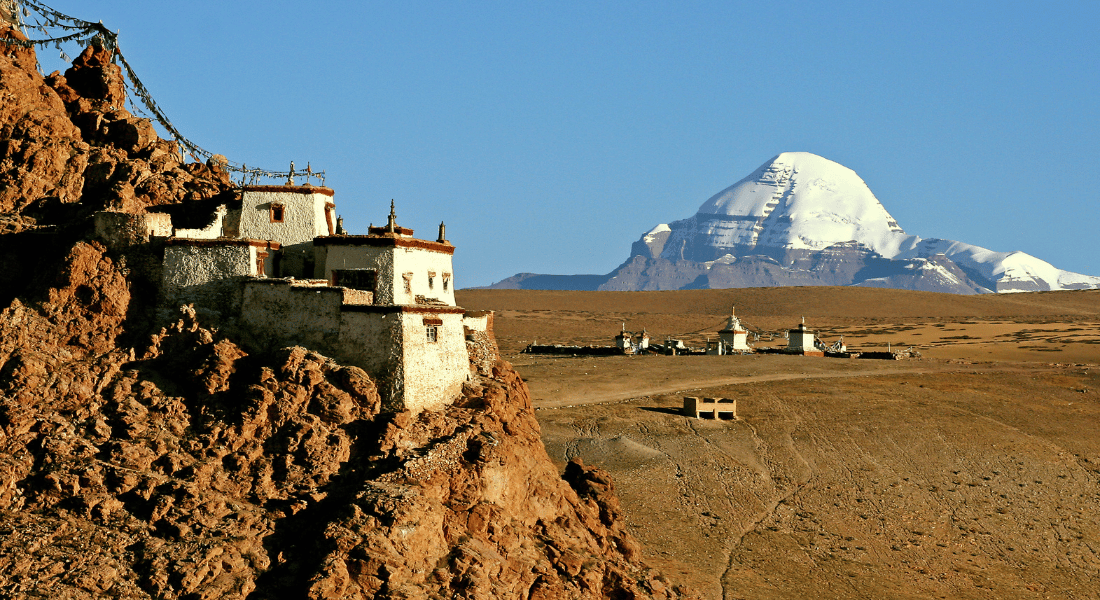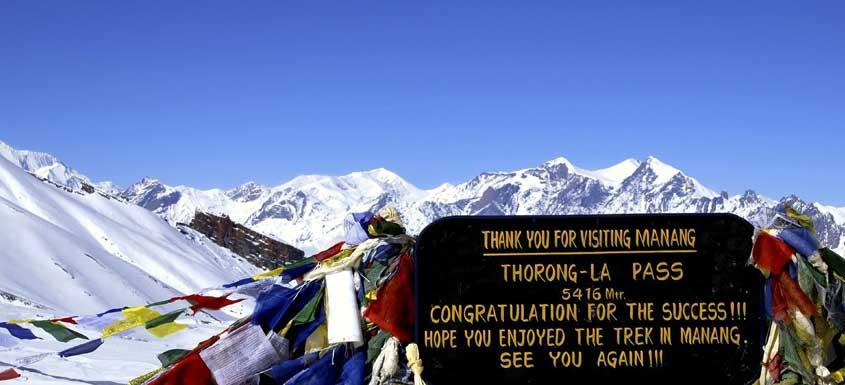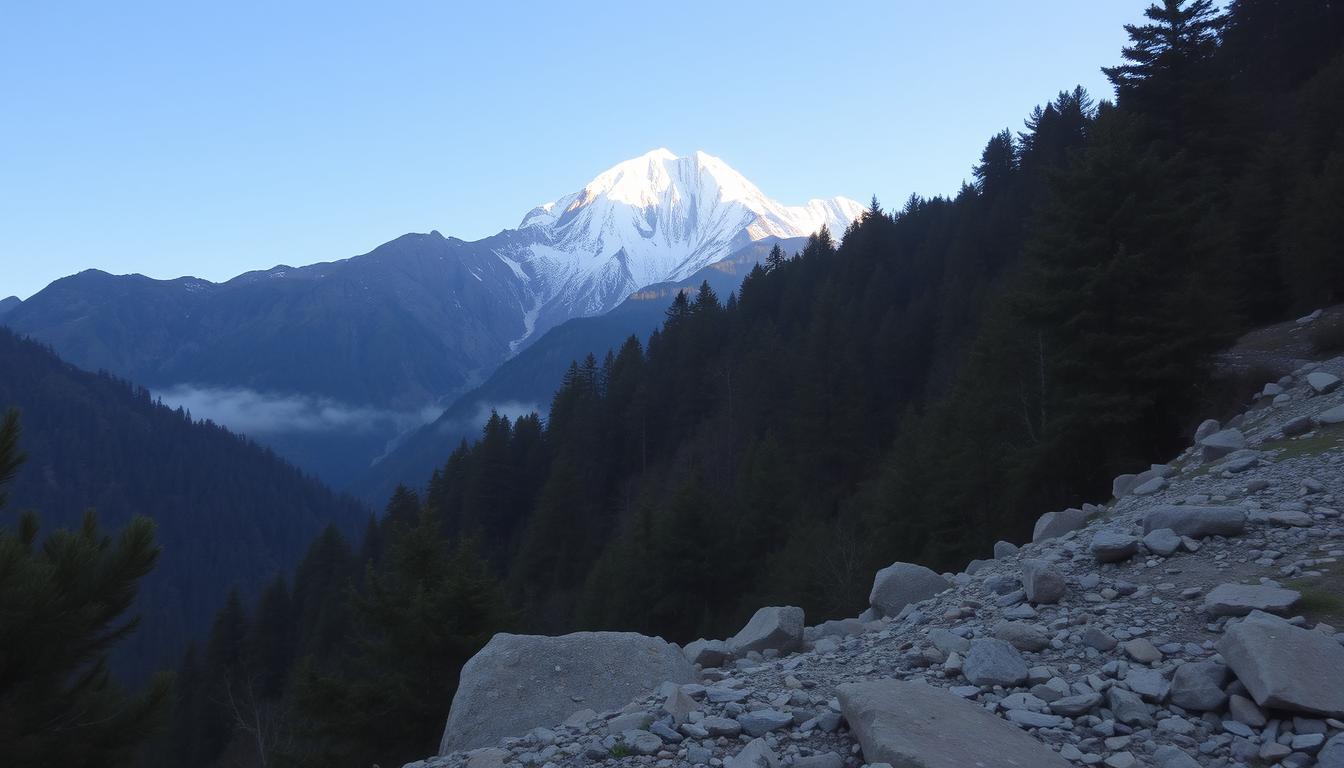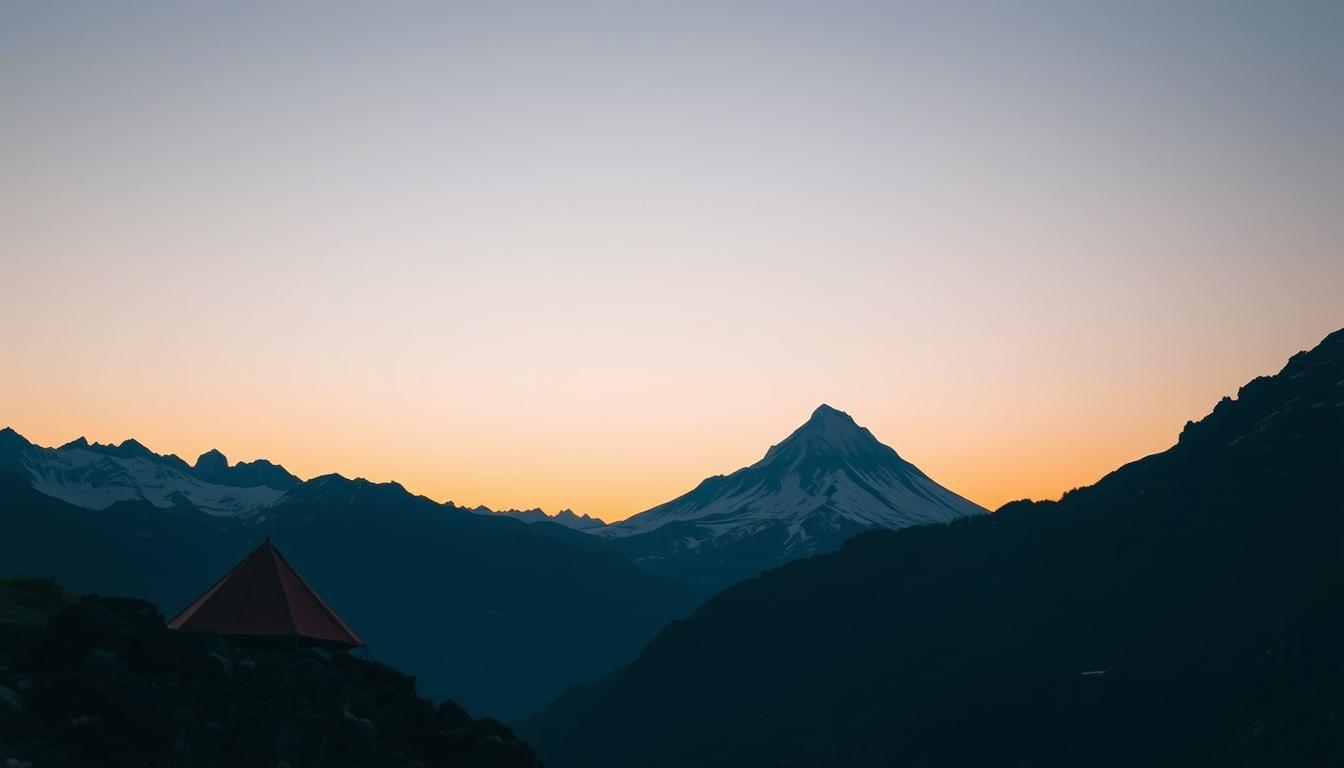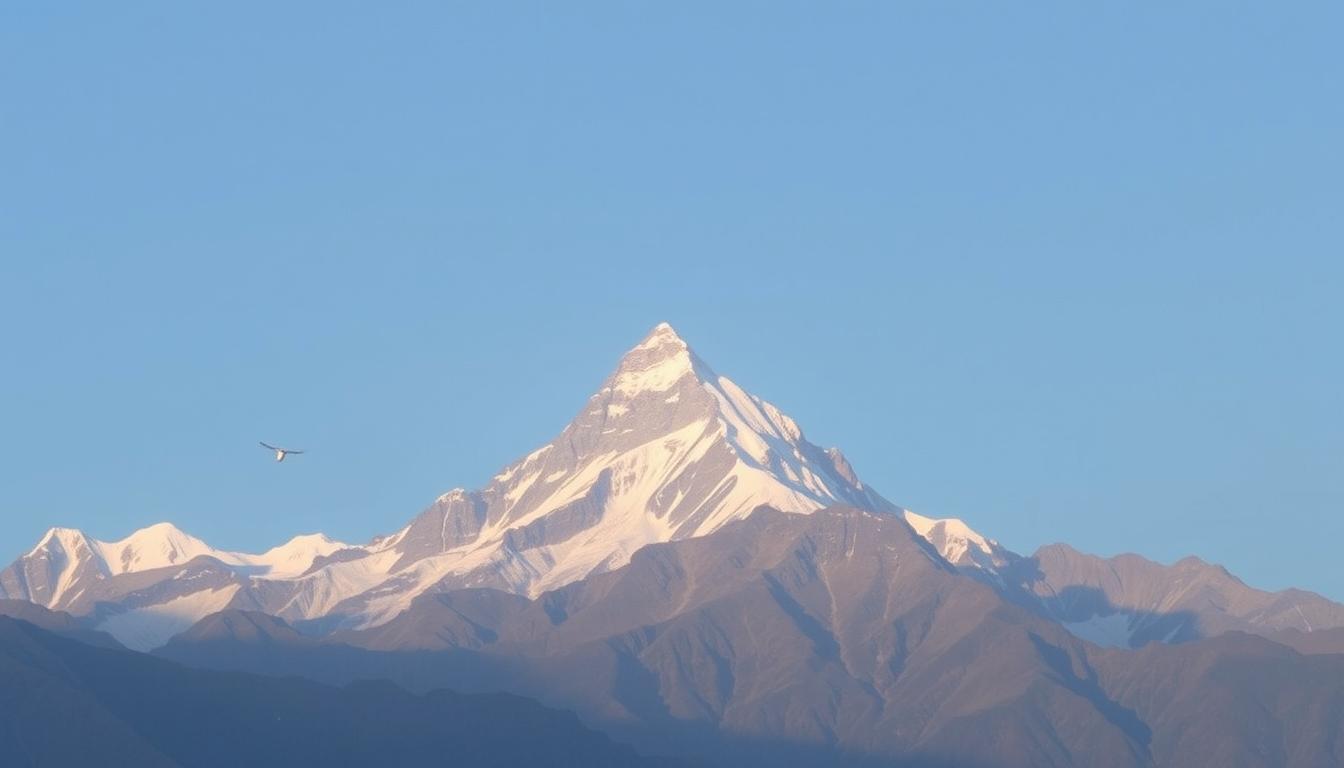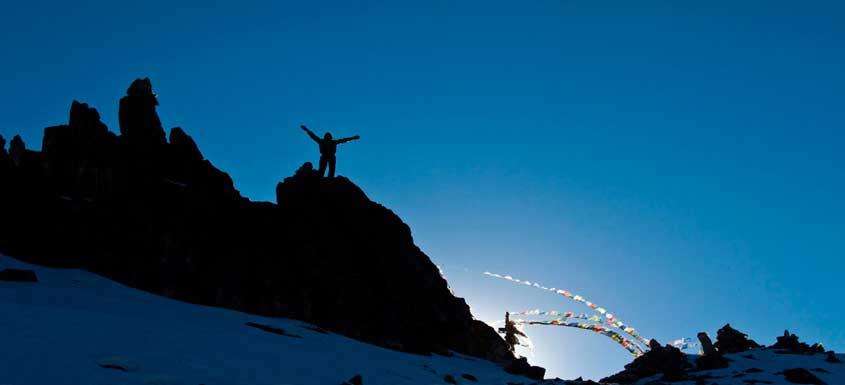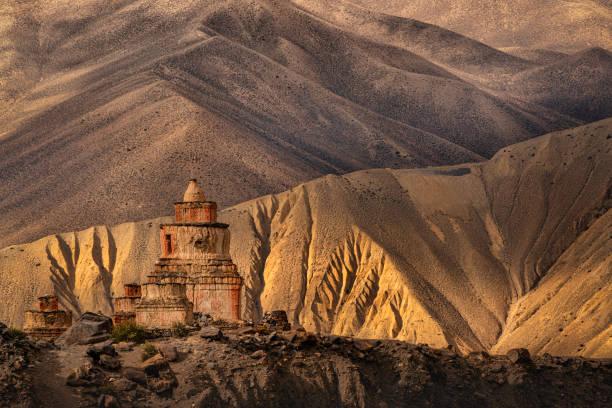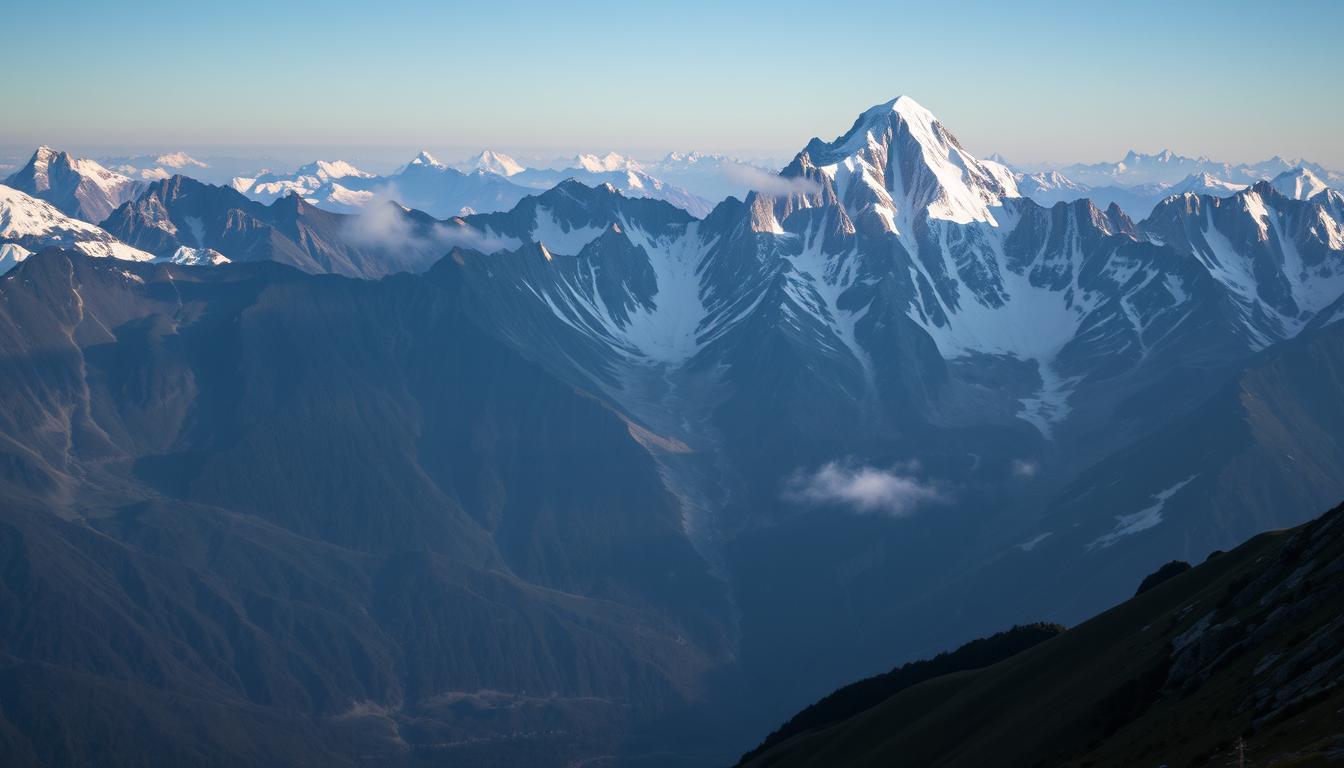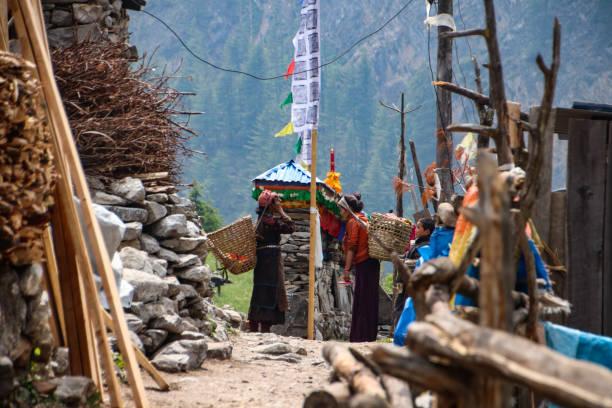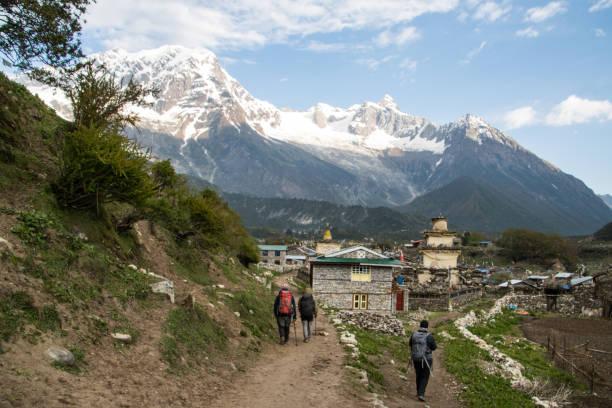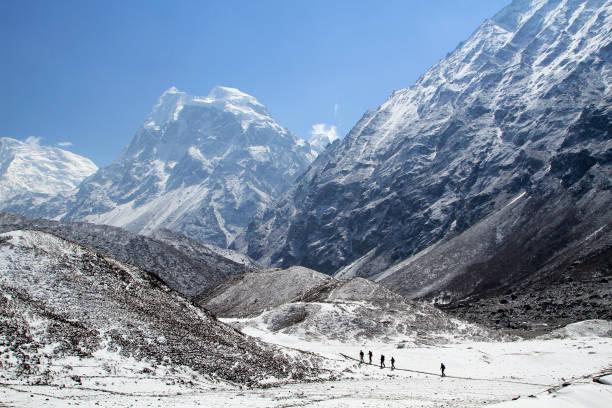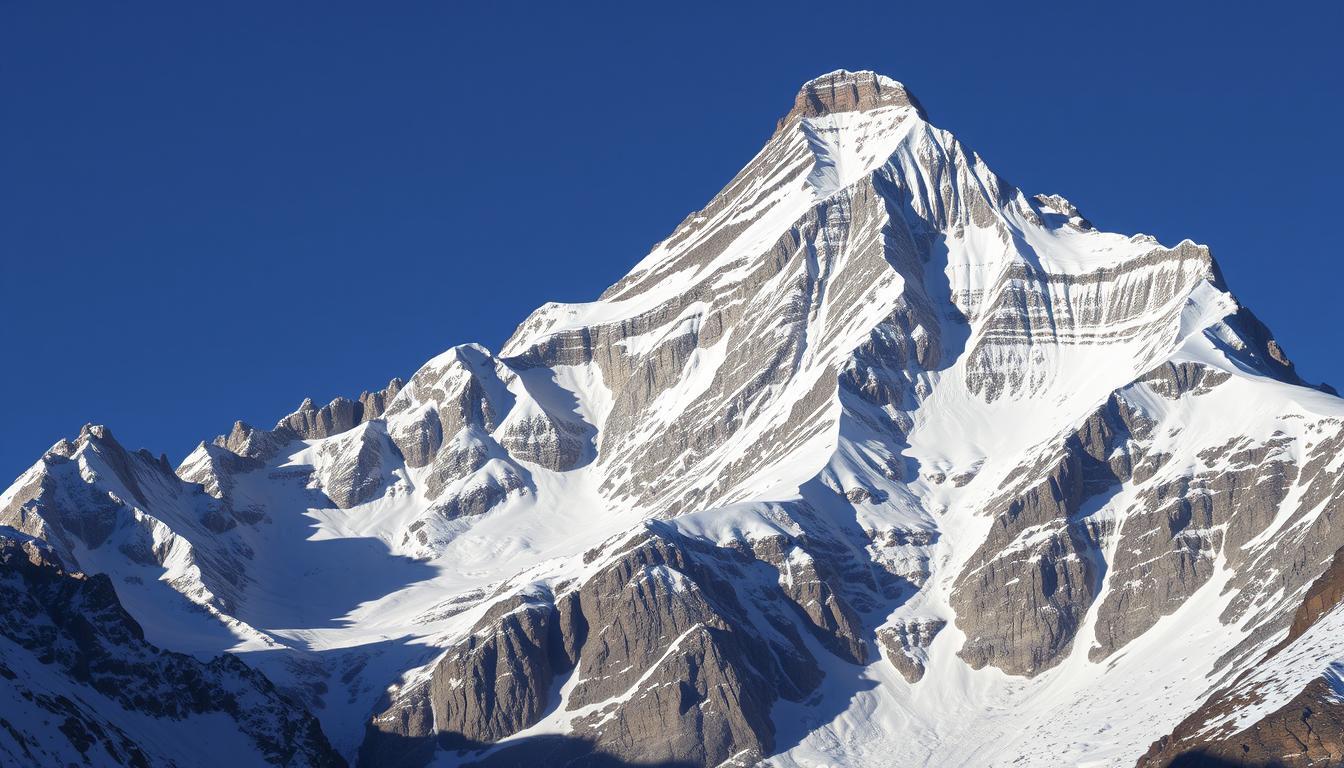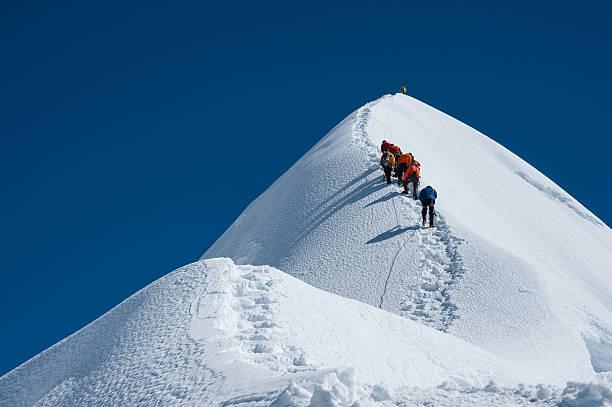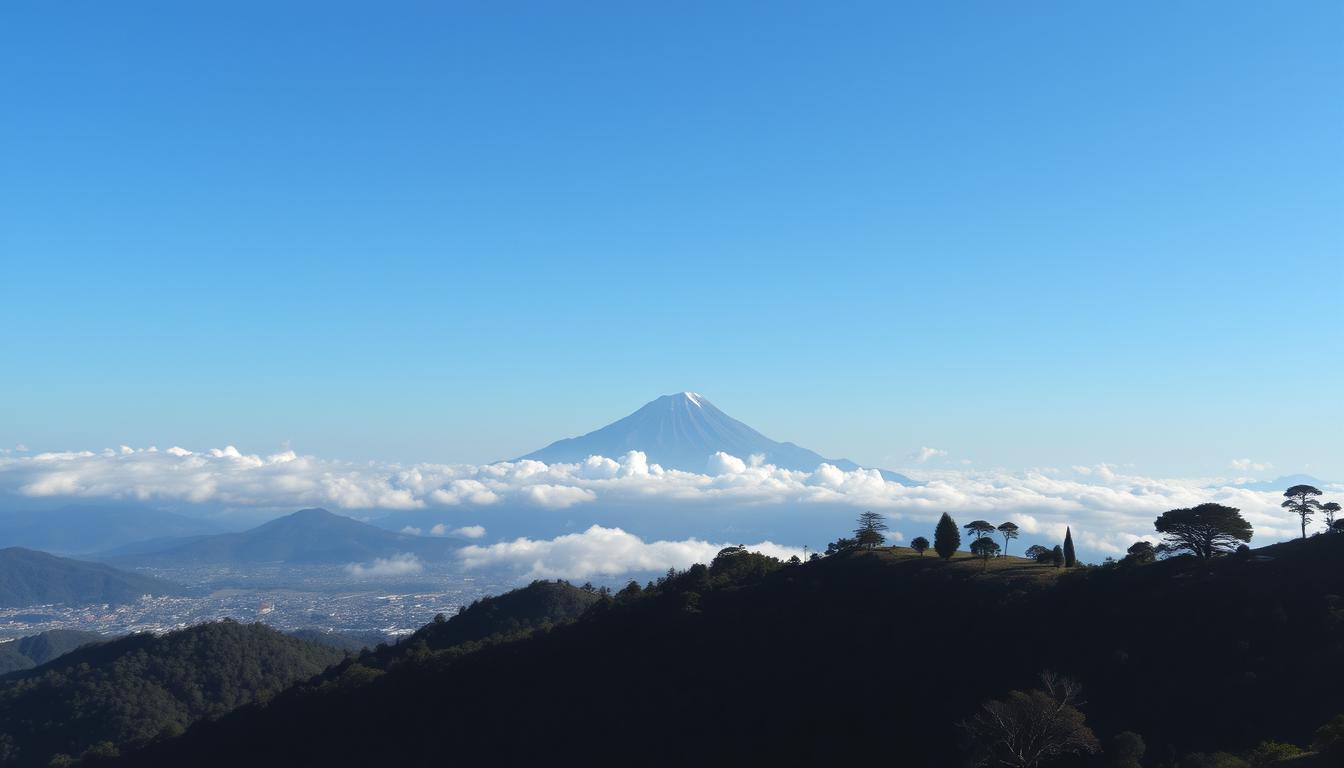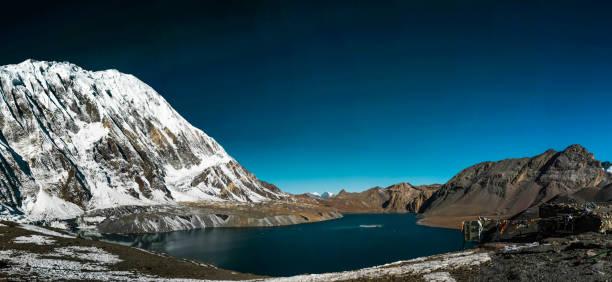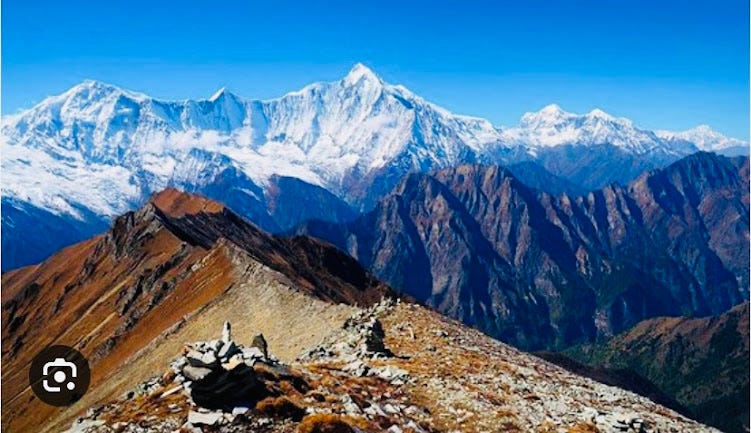Mera Peak Climbing Expedition: Conquering Nepal’s Highest Trekking Peak
- Home
- Mera Peak Climbing Expedition: Conquering Nepal’s Highest Trekking Peak
Budget
NPR 1000
Per Person
Rating
No review has been posted yet
Duration
25 Days
Trip Overview
Mera Peak, standing at 6,476 meters (21,247 feet), is one of Nepal’s most popular trekking peaks and a fantastic introduction to high-altitude mountaineering. Located in the remote Hinku Valley in the eastern Himalayas, it offers climbers a challenging yet accessible climb with breathtaking panoramic views of five of the world’s 8,000-meter giants: Everest, Lhotse, Makalu, Cho Oyu, and Kangchenjunga.
This detailed guide covers everything you need to know about climbing Mera Peak, including Sherpa guide support, permits, location, airport logistics, itineraries, costs, and necessary equipment.
Mera Peak is located in the Makalu Barun National Park and lies within the eastern region of Nepal, near the border with Tibet. The peak is often considered the highest trekking peak in Nepal and is known for its relatively straightforward but physically demanding climb.
The surrounding national park is famous for its pristine forests, diverse wildlife, and stunning alpine landscapes. Climbers can enjoy the rich natural beauty alongside their mountaineering adventure.
Sherpa Guides: Your Crucial Expedition Partners
While Mera Peak is classified as a trekking peak, its high altitude and glaciated terrain require technical skills, making the presence of Sherpa guides essential.
What Sherpa Guides Provide:
- Technical support: Helping climbers navigate glacier crossings, crevasses, and steep snow slopes.
- Load carrying: Assisting in ferrying equipment and supplies between camps.
- Route fixing: Setting ropes on steep or exposed sections.
- Acclimatization guidance: Advising climbers on pacing and altitude sickness prevention.
- Emergency assistance: Providing medical help and organizing rescue operations if needed.
Hiring experienced Sherpa guides familiar with the Mera Peak route increases safety, confidence, and the chances of a successful summit.
Book This Trip
Trip Information
 Start : Kathmandu
Start : Kathmandu Finish : Kathmandu
Finish : Kathmandu Difficulty :
Moderate
Difficulty :
Moderate
 Max Altitude : 6476m
Max Altitude : 6476m Group Size :
Group Size :  Season :
Season :
Trip Gallery
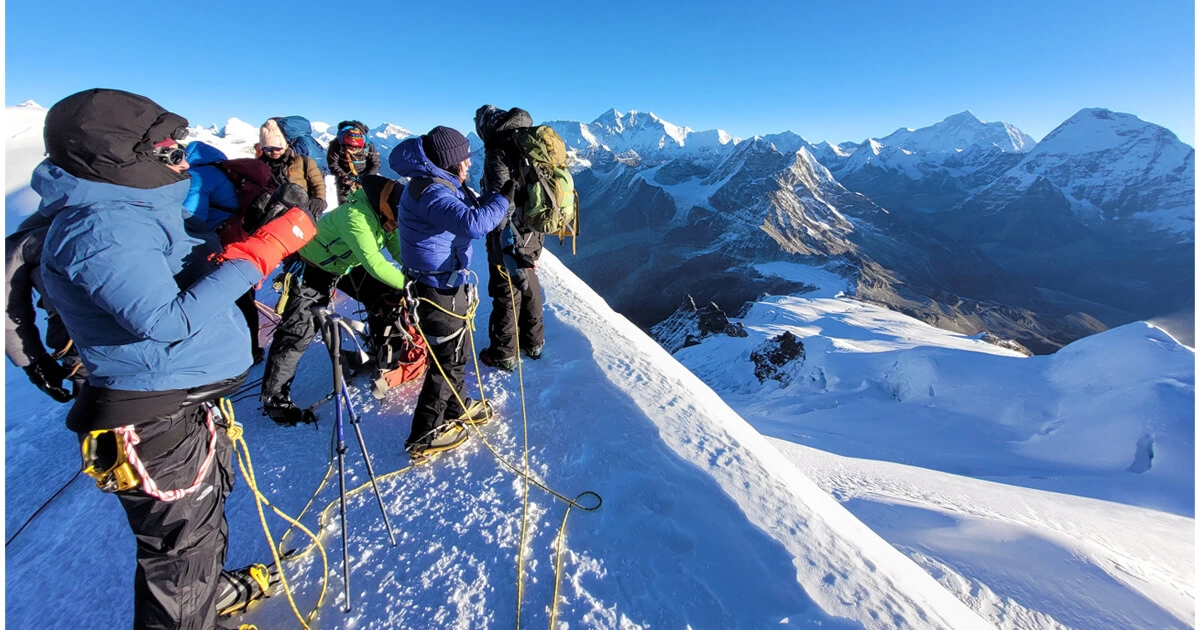
Trip Itinerary
Arrival, gear check, permit processing, and briefing.
Flight to Lukla or Tumlingtar.Trek through Sherpa villages and forested valleys.Arrive at Mera Base Camp at around 5,200 meters.
Acclimatization hikes and establishing higher camps.Climb Mera Peak via the technically moderate southwest ridge.Summit attempt early morning; typically takes 8-12 hours.Descend to Base Camp.
Trek back to Lukla or Tumlingtar.Fly to Kathmandu and rest.
Cost Includes
- Mera Peak climbing permit and national park fees.
- Domestic flights Kathmandu–Lukla/Tumlingtar–Kathmandu.
- Salaries, insurance, and equipment for Sherpa guides and porters.
- Accommodation and meals during trek and expedition.
- Fixed ropes and climbing gear supplied by the expedition.
- Government taxes and liaison officer fees
Between USD 5,000 and 12,000 depending on expedition size, support level, and duration.
- Mera Peak climbing permit and national park fees.
- Domestic flights Kathmandu–Lukla/Tumlingtar–Kathmandu.
- Salaries, insurance, and equipment for Sherpa guides and porters.
- Accommodation and meals during trek and expedition.
- Fixed ropes and climbing gear supplied by the expedition.
- Government taxes and liaison officer fees
Between USD 5,000 and 12,000 depending on expedition size, support level, and duration.
Cost Excludes
- International airfare to/from Nepal.
- Personal climbing gear and clothing.
- Travel and medical insurance covering evacuation.
- Tips for Sherpa guides and support staff.
- Personal expenses like SIM cards, snacks, and souvenirs.
- Emergency helicopter evacuation (optional).
- International airfare to/from Nepal.
- Personal climbing gear and clothing.
- Travel and medical insurance covering evacuation.
- Tips for Sherpa guides and support staff.
- Personal expenses like SIM cards, snacks, and souvenirs.
- Emergency helicopter evacuation (optional).
Essential Info
To climb Mera Peak, climbers must obtain several permits:
1. Mera Peak Climbing Permit
- Cost: Approximately USD 600–700 per climber.
- Issued by Nepal’s Ministry of Tourism.
- Valid for 30 days.
2. Makalu Barun National Park Permit
- Cost: NPR 3,000 (~USD 25).
- Required to enter and trek through the protected park.
3. Local Area Permit
- Nominal fees to support local communities.
- Expedition members must register with the Nepal Mountaineering Association and carry valid insurance covering high-altitude evacuation.
Tribhuvan International Airport (Kathmandu)
All Mera Peak expeditions begin from Kathmandu, Nepal’s international gateway.
Domestic Flight to Lukla or Tumlingtar
- The most common route is to fly from Kathmandu to Lukla (Tenzing-Hillary Airport), followed by a trek eastward.
- Alternatively, fly from Kathmandu to Tumlingtar (near the Arun Valley), which is closer to Mera Peak but less frequented and with fewer flights.
Trek to Mera Base Camp
- From Lukla, it takes approximately 6-8 days of trekking through villages like Phakding, Namche Bazaar, and Kothe before reaching Mera Base Camp.
- From Tumlingtar, the trek route is shorter but less traveled.
The trek passes through the beautiful valleys of Makalu Barun National Park with opportunities to see rhododendron forests, alpine meadows, and rare wildlife.
Extra Info
Essential Equipment for Mera Peak Climbing
While Mera Peak is considered a trekking peak, climbers must be prepared for glacier travel and moderate technical sections.
Clothing
Insulated down jacket and pants for high altitude.
Layered clothing: moisture-wicking base layers, fleece, softshell, waterproof shell.
Mountaineering boots suitable for crampons.
Warm gloves, mittens, balaclava, and thermal socks.
Climbing Gear
Climbing helmet.
Harness, carabiners, ascenders, descenders.
Ice axe and crampons.
Fixed rope gear (usually provided by the expedition).
Trekking poles.
Headlamp with extra batteries.
UV-protection glacier sunglasses or goggles.
Camping and Safety
Four-season sleeping bag rated to -20°C or colder.
Sleeping pad for insulation.
First aid kit and personal medication.
Communication devices (satellite phone or radio).
Personal hygiene items for cold environments.
Trip Date And Time
We'll Be There, Like We've Been There Before
|
Departing |
Finishing |
Trip Price Per Person |
Action |
Enquire |
|---|---|---|---|---|
| No Trip Yet!! | ||||
